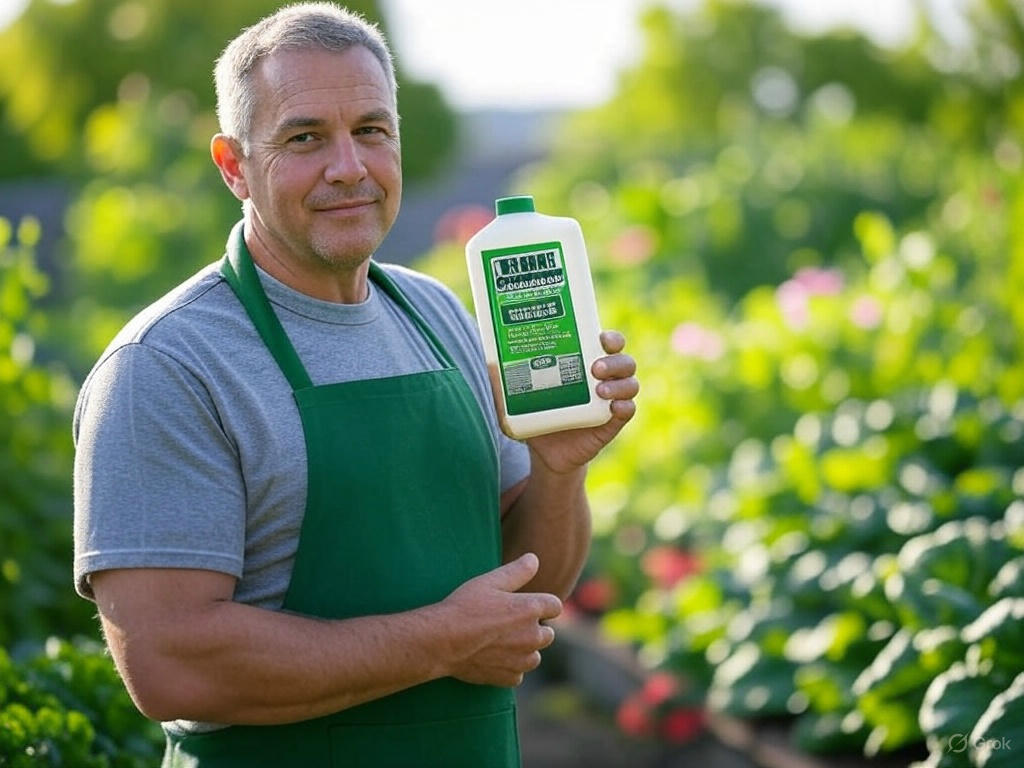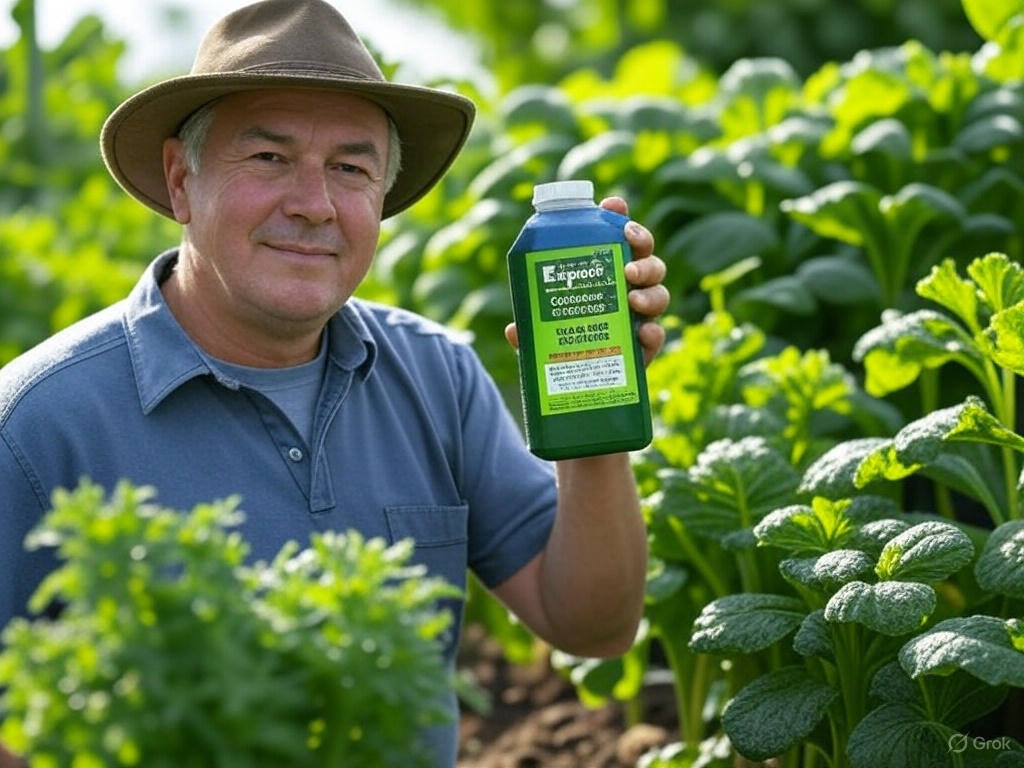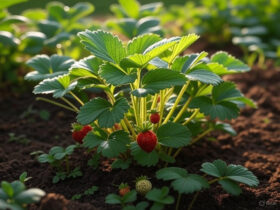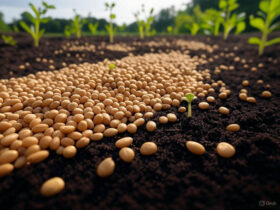Using Expert Gardener Organics Vegetable is simple. Start by reading the instructions.
Follow the steps for best results. Gardening is a rewarding hobby. Growing your own vegetables can be fun and healthy. Expert Gardener Organics Vegetable is a product that helps your garden thrive. It provides essential nutrients to your plants. Using it correctly boosts growth and yields.
Whether you’re a beginner or a seasoned gardener, understanding how to use this product is key. This guide will walk you through the process. You’ll learn how to apply it effectively. Discover tips for better plant health. Improve your gardening skills with these easy steps. Start your journey to a fruitful garden today. Get ready to enjoy fresh, homegrown vegetables.
Getting Started With Expert Gardener Organics
Are you ready to grow healthy and vibrant vegetables? Starting with the right products and preparation is key. In this guide, we will walk you through how to use Expert Gardener Organics Vegetable. Let’s dive into the essentials of getting started with Expert Gardener Organics.
Choosing The Right Products
Choosing the right products is crucial for a successful garden. Expert Gardener offers a range of organic products tailored for different vegetables and needs.
- Expert Gardener Plant Food: A versatile option for various vegetables. It provides balanced nutrition.
- Expert Gardener Tomato Fertilizer: Specifically formulated for tomatoes. It enhances growth and fruit production.
- Expert Gardener Organics Vegetable & Tomato Food: A comprehensive choice. It serves both vegetables and tomatoes with essential nutrients.
- Expert Gardener Tomato and Vegetable Plant Food: Perfect for gardens with both tomatoes and other vegetables. It supports overall plant health.
To help you choose, here’s a quick comparison:
| Product | Best For | Key Benefits |
|---|---|---|
| Expert Gardener Plant Food | General Vegetables | Balanced Nutrition |
| Expert Gardener Tomato Fertilizer | Tomatoes | Enhanced Growth |
| Expert Gardener Organics Vegetable & Tomato Food | Vegetables & Tomatoes | Essential Nutrients |
| Expert Gardener Tomato and Vegetable Plant Food | Mixed Gardens | Overall Plant Health |
Selecting the right product ensures your plants get the specific nutrients they need. This choice directly impacts their growth and yield.

Table of Contents
Preparing Your Garden
Proper preparation of your garden is the next step. It sets the foundation for your plants to thrive. Here’s how to get started.
1. Clear the Area
Remove weeds, rocks, and debris from the garden bed. This ensures your plants have space to grow.
2. Test the Soil
Check the soil pH and nutrient levels. This helps in understanding what amendments are necessary. You can use a simple home test kit for this purpose.
3. Add Organic Matter
Incorporate compost or aged manure into the soil. This improves soil structure and fertility. Aim for at least 2-3 inches of organic matter.
4. Apply Expert Gardener Organics Vegetable & Tomato Food
Follow the instructions on the package. Spread the fertilizer evenly across the garden bed. Work it into the top 6 inches of soil.
5. Water the Soil
Moisten the soil thoroughly after adding the fertilizer. This helps the nutrients to start breaking down and become available to plants.
Here’s a simple checklist to ensure you don’t miss a step:
- Clear the garden area
- Test the soil
- Add organic matter
- Apply Expert Gardener Organics Vegetable & Tomato Food
- Water the soil
By preparing your garden well, you create an ideal environment for your plants. This leads to healthier, more productive vegetables.
Soil Health Essentials
Expert Gardener Organics Vegetable products are essential tools for anyone looking to grow healthy and bountiful vegetable gardens. A key component of successful gardening with these products is maintaining excellent soil health. Healthy soil is the foundation for strong and productive plants. Let’s delve into the essentials of soil health and how to use Expert Gardener Organics Vegetable products effectively.
Testing Soil Quality
Before planting, it’s crucial to test your soil quality. This step helps you understand the nutrient levels, pH balance, and soil composition. Here’s how to get started:
1. Collect Soil Samples:
- Take samples from different parts of your garden.
- Dig 6-8 inches deep for each sample.
- Mix the samples in a clean container.
2. Use a Soil Testing Kit:
- Purchase a kit from a gardening store or online.
- Follow the instructions on the kit carefully.
- Test for pH level, nitrogen, phosphorus, and potassium.
3. Interpret the Results:
Once you have your results, you can determine the necessary amendments. Here’s a simple guide:
| Nutrient | Deficiency Sign | Solution |
|---|---|---|
| Nitrogen | Yellowing leaves | Add compost or Expert Gardener Plant Food |
| Phosphorus | Purple leaves | Use bone meal or Expert Gardener Tomato Fertilizer |
| Potassium | Brown leaf edges | Add wood ash or Expert Gardener Organics Vegetable & Tomato Food |
Improving Soil Structure
Good soil structure allows air and water to move freely, which is vital for root growth. Here’s how to improve your soil structure:
1. Add Organic Matter:
- Incorporate compost or aged manure into the soil.
- Use Expert Gardener Organics Vegetable products for added nutrients.
- Apply a 2-3 inch layer of organic mulch on the surface.
2. Aerate the Soil:
- Use a garden fork or aerator tool to loosen compacted soil.
- Aerate in the fall or spring for best results.
3. Avoid Soil Compaction:
- Do not walk on the garden beds.
- Use designated paths for foot traffic.
- Plant cover crops like clover or rye in the off-season.
By following these steps, you can ensure that your soil remains healthy and fertile. This will help you get the best results from using Expert Gardener Tomato and Vegetable Plant Food. Healthy soil leads to healthy plants and abundant harvests.
Planting Techniques
Planting Techniques are essential for growing healthy vegetables with Expert Gardener Organics Vegetable. Following the right methods ensures your plants get the best start. Here are some key aspects to consider when planting your vegetables.
Seed Selection
Choosing the right seeds is a critical step in knowing how to use Expert Gardener Organics Vegetable. Start by selecting seeds that are suitable for your climate and soil type. Look for seeds that have good resistance to local pests and diseases. This increases your chances of a healthy harvest.
Consider these points when selecting seeds:
- Climate Compatibility: Choose seeds that thrive in your local climate.
- Soil Requirements: Ensure the seeds are suitable for your soil type, whether it’s sandy, loamy, or clay.
- Disease Resistance: Opt for seeds with high resistance to common diseases in your area.
- Growth Duration: Check the growing period to match your planting schedule.
Here is a simple table to help you choose the right seeds:
| Seed Type | Climate | Soil Type | Resistance |
|---|---|---|---|
| Tomato | Warm | Loamy | High |
| Carrot | Cool | Sandy | Moderate |
| Lettuce | Cool | Loamy | Low |
Using Expert Gardener Tomato and Vegetable Plant Food can enhance your seed’s growth potential. Apply the plant food as per the instructions on the package for the best results.
Optimal Planting Depth
Planting seeds at the correct depth is vital for their germination and growth. Each vegetable has a recommended planting depth, which should be followed closely. For example, carrot seeds should be planted at a shallow depth, whereas beans need to be deeper in the soil.
Here are some general guidelines for planting depth:
- Small Seeds: Plant at a depth of 1/4 inch.
- Medium Seeds: Plant at a depth of 1/2 inch.
- Large Seeds: Plant at a depth of 1 inch or more.
Refer to the following table for specific vegetables:
| Vegetable | Planting Depth |
|---|---|
| Tomato | 1/4 inch |
| Carrot | 1/4 inch |
| Bean | 1 inch |
Using Expert Gardener Tomato Fertilizer can further support your plants. Mix the fertilizer into the soil at the time of planting. This ensures the young roots get immediate access to nutrients.
Remember, the key to successful planting is consistency. Keep your soil moist but not waterlogged. Use Expert Gardener Organics Vegetable & Tomato Food to nourish your plants throughout their growth cycle. This will help you achieve a thriving vegetable garden.

Watering Practices
Introduction paragraph about How to Use Expert Gardener Organics Vegetable and Watering Practices…
Learning how to use Expert Gardener Organics Vegetable effectively involves understanding proper watering practices. Water is essential for plant growth, but too much or too little can harm your vegetables. This section explores the best watering methods and tips for avoiding overwatering to ensure your garden thrives.
Best Watering Methods
Proper watering is crucial for growing healthy vegetables with Expert Gardener Organics Vegetable. Here are some methods to ensure your plants get the right amount of water:
- Drip Irrigation: Provides water directly to the roots. Reduces water waste and minimizes leaf wetting, which can lead to diseases.
- Soaker Hoses: Allow water to seep out slowly. Ensures deep root watering and reduces evaporation.
- Mulching: Helps retain moisture in the soil. Prevents weed growth and protects plant roots.
Using the correct watering method can enhance the effectiveness of Expert Gardener Organics Vegetable & Tomato Food. It ensures nutrients are absorbed properly, leading to healthier plants.
| Method | Benefits |
|---|---|
| Drip Irrigation | Direct root watering, less waste, minimizes disease |
| Soaker Hoses | Deep root watering, reduces evaporation |
| Mulching | Moisture retention, weed prevention, root protection |
Combining these methods with Expert Gardener Tomato and Vegetable Plant Food ensures your plants receive the necessary nutrients along with water. Regular monitoring and adjustments based on plant needs will lead to a flourishing garden.
Avoiding Overwatering
Overwatering can be detrimental to your garden. It leads to root rot and attracts pests. Here are tips to avoid overwatering:
- Check Soil Moisture: Insert your finger into the soil. If it feels damp, wait before watering again.
- Water Early Morning: Allows plants to absorb water before the heat of the day. Reduces evaporation.
- Use Well-Draining Soil: Prevents water from pooling around the roots. Combine with Expert Gardener Organics Vegetable for best results.
Understanding how to use Expert Gardener Organics Vegetable includes knowing the signs of overwatering. Yellowing leaves and wilting despite moist soil are indicators. Adjust your watering schedule to prevent these issues.
Expert Gardener Tomato Fertilizer works best when plants are watered appropriately. Too much water can wash away nutrients, while too little can prevent absorption. Regular checks and mindful watering practices ensure your garden remains healthy.
Using Expert Gardener Plant Food effectively means balancing nutrients and water. Follow these tips to avoid overwatering and keep your vegetables growing strong.
Fertilization Tips
Gardening with Expert Gardener Organics Vegetable products can help your plants thrive. Fertilization is key to ensuring that your vegetables receive the nutrients they need for healthy growth. Here are some fertilization tips to help you get the most out of your garden.
Choosing Organic Fertilizers
When deciding how to use Expert Gardener Organics Vegetable products, choosing the right organic fertilizers is crucial. Organic fertilizers improve soil health and provide essential nutrients. Here are some options:
- Expert Gardener Plant Food: This balanced fertilizer supports overall plant health.
- Expert Gardener Tomato Fertilizer: Ideal for tomatoes, this fertilizer enhances fruit production.
- Expert Gardener Organics Vegetable & Tomato Food: Specifically designed for vegetable gardens, it promotes vigorous growth.
- Expert Gardener Tomato and Vegetable Plant Food: A versatile option for both tomatoes and other vegetables.
Consider these factors when choosing an organic fertilizer:
- Soil Type: Different soils have different nutrient needs.
- Plant Requirements: Some plants need more of certain nutrients.
- Growth Stage: Seedlings and mature plants have different nutrient requirements.
Here’s a comparison of the fertilizers:
| Fertilizer | Best For | Key Nutrients |
|---|---|---|
| Expert Gardener Plant Food | Overall Plant Health | Nitrogen, Phosphorus, Potassium |
| Expert Gardener Tomato Fertilizer | Tomato Plants | Phosphorus, Potassium |
| Expert Gardener Organics Vegetable & Tomato Food | Vegetable Gardens | Nitrogen, Phosphorus, Potassium |
| Expert Gardener Tomato and Vegetable Plant Food | Tomatoes and Vegetables | Nitrogen, Phosphorus, Potassium |
Application Frequency
Knowing how often to apply Expert Gardener Organics Vegetable & Tomato Food is important for plant health. Different plants and growth stages require specific frequencies:
- Seedlings: Apply every two weeks.
- Established Plants: Apply monthly.
- Heavy Feeders: Apply bi-weekly.
Here’s a simple schedule:
| Plant Type | Application Frequency |
|---|---|
| Seedlings | Every Two Weeks |
| Established Plants | Monthly |
| Heavy Feeders | Bi-weekly |
Adjust the frequency based on plant growth and health. Monitor your plants and tweak the schedule if necessary. Follow these tips to ensure your garden flourishes with Expert Gardener Tomato and Vegetable Plant Food.

Pest And Disease Management
Gardening can be a rewarding hobby, especially when you see your vegetables grow healthy and strong. However, managing pests and diseases is crucial to maintaining a thriving garden. Using Expert Gardener Organics Vegetable products can help you keep these problems at bay while ensuring your plants get the nutrients they need. Let’s explore how to manage pests and diseases effectively.
Identifying Common Pests
To keep your garden healthy, the first step is identifying the common pests that may attack your plants. Recognizing these pests early can save your garden from major damage.
Here are some of the most common garden pests:
- Aphids: Small, green, or black insects that suck sap from plants.
- Whiteflies: Tiny, white insects that fly around when you disturb the plant.
- Tomato Hornworms: Large, green caterpillars with white stripes.
- Squash Bugs: Flat, brownish insects that suck sap from squash plants.
- Cutworms: Fat, gray or brown caterpillars that cut young plants at the soil level.
Use the table below to quickly identify these pests and the signs of their presence:
| Pest | Appearance | Signs |
|---|---|---|
| Aphids | Small, green or black | Sticky residue on leaves |
| Whiteflies | Tiny, white | White clouds when disturbed |
| Tomato Hornworms | Large, green with white stripes | Chewed leaves and fruit |
| Squash Bugs | Flat, brownish | Wilted plants, yellow spots |
| Cutworms | Fat, gray or brown | Cut stems at soil level |
Organic Control Methods
Once you identify the pests, you can use organic methods to control them. Expert Gardener Organics Vegetable products help in managing these pests without harming the environment.
Here are some organic control methods:
- Handpicking: Remove pests like tomato hornworms by hand.
- Neem Oil: Spray neem oil to control aphids and whiteflies.
- Insecticidal Soap: Use soap to wash away small insects.
- Companion Planting: Plant marigolds to deter squash bugs.
- Row Covers: Protect plants from cutworms with physical barriers.
Using these methods along with Expert Gardener Tomato Fertilizer and Expert Gardener Plant Food ensures your plants stay strong and healthy. Regularly check your garden and apply Expert Gardener Organics Vegetable & Tomato Food to keep pests at bay. Combining these practices with the right care can lead to a bountiful and healthy garden.
Harvesting And Storage
Using Expert Gardener Organics Vegetable products is a great way to grow healthy and productive plants. But knowing when and how to harvest and store your vegetables is crucial for getting the most out of your garden. This guide will help you understand the best practices for harvesting and storing your produce to keep it fresh and tasty for as long as possible.
When To Harvest
Knowing the right time to harvest your vegetables is key to ensuring maximum flavor and nutrition. The timing can vary depending on the type of vegetable and the growing conditions. Here are some general guidelines:
- Tomatoes: Harvest when they are fully colored and slightly soft to the touch. Use Expert Gardener Tomato Fertilizer to promote healthy growth and rich flavor.
- Leafy Greens: Pick leaves when they are tender and before they become too large. Regular feeding with Expert Gardener Plant Food can help ensure a continuous supply of fresh leaves.
- Root Vegetables: Harvest when the roots are firm and have reached the desired size. Expert Gardener Organics Vegetable & Tomato Food can help you achieve the perfect size and taste.
For a more detailed guide, you might consider using a table like the one below:
| Vegetable | Harvest Time | Signs of Readiness |
|---|---|---|
| Tomatoes | 60-85 days after planting | Fully colored, slightly soft |
| Leafy Greens | 30-50 days after planting | Tender leaves |
| Carrots | 70-80 days after planting | Firm roots, desired size |
Using Expert Gardener Tomato and Vegetable Plant Food can help ensure your vegetables are ready for harvest at the optimal time. Regular monitoring and a little patience go a long way in achieving the best results.
Best Storage Practices
Proper storage is essential to keep your harvested vegetables fresh for as long as possible. Here are some tips:
- Tomatoes: Store at room temperature, away from direct sunlight. Avoid refrigeration to maintain flavor.
- Leafy Greens: Rinse and dry thoroughly. Store in a plastic bag with a paper towel to absorb excess moisture. Refrigerate to keep fresh.
- Root Vegetables: Remove greens and store in a cool, dark place. Use a perforated plastic bag to maintain humidity without trapping excess moisture.
Consider these specific storage practices for different vegetables:
| Vegetable | Storage Method | Storage Life |
|---|---|---|
| Tomatoes | Room temperature, away from sunlight | 1-2 weeks |
| Leafy Greens | Refrigerate in a plastic bag with paper towel | 1 week |
| Carrots | Cool, dark place in a perforated bag | 2-3 weeks |
Using Expert Gardener Organics Vegetable & Tomato Food during the growing season can help produce vegetables that store well. Following these best storage practices ensures you enjoy fresh, flavorful vegetables long after harvest.

Frequently Asked Questions
How Do You Use Organic Fertilizer On Vegetables?
Apply organic fertilizer by spreading it around the base of vegetable plants. Mix it into the soil gently. Water the area thoroughly after application. Repeat every few weeks for best results.
Is Expert Gardener Plant Food Good For Vegetables?
Yes, Expert Gardener plant food is good for vegetables. It provides essential nutrients, promoting healthy growth and better yields.
How To Use Expert Gardener Plant Food In Potted Plants?
Mix Expert Gardener plant food with water according to package instructions. Apply the solution to the soil. Water plants regularly.
Can I Just Sprinkle Fertilizer On Top Of Soil?
Yes, you can sprinkle fertilizer on top of the soil. However, it’s more effective to mix it into the soil. This ensures better nutrient absorption by plants.
What Are Expert Gardener Organics Vegetable?
Expert Gardener Organics Vegetable are products for growing healthy vegetables. They are made from natural ingredients.
How Do I Use Expert Gardener Organics Vegetable?
Mix the organic product with soil. Follow the instructions on the packaging for the right amount.
Is Expert Gardener Organics Vegetable Safe?
Yes, they are safe. Made from natural ingredients and free from harmful chemicals.
Conclusion
Gardening with Expert Gardener Organics Vegetable is easy and rewarding. Your plants get the nutrients they need. Healthier soil means better vegetables. Follow the steps and see the results. Enjoy fresh, home-grown veggies. Happy gardening!










Leave a Reply